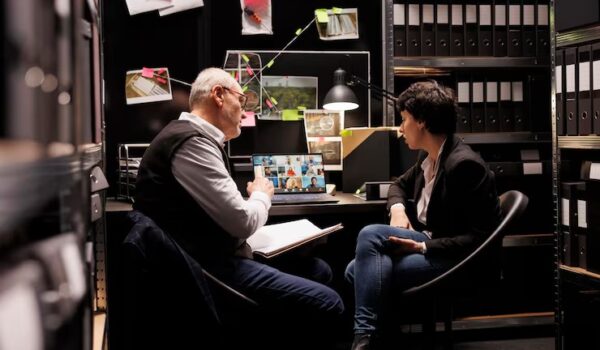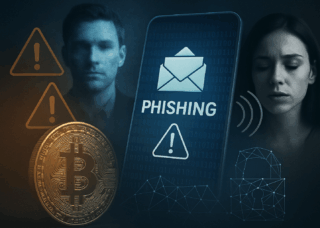In the complex world of personal injury law, surveillance plays a crucial role in substantiating or refuting claims. It’s a powerful tool that can make or break a case, ultimately determining the outcome of a lawsuit. With this in mind, let’s dive deeper into the importance of surveillance, the various methods used, and how it can impact your personal injury case.
Summary (Personal Injury and Private Investigations):
- Surveillance plays an important role in personal injury lawsuits, providing evidence to establish the defendant’s negligence or wrongdoing.
- Hiring a private investigator can provide invaluable evidence and expertise to build a strong case.
- It is important to understand one’s rights and privacy considerations when navigating government surveillance and investigations for personal injury cases.
The Role of Surveillance in Personal Injury Lawsuits
Surveillance is an essential aspect of personal injury lawsuits. It helps in gathering evidence and guarantees its acceptability in court. A personal injury lawsuit requires certain legal elements. These include:
- A legal duty owed by the defendant to the plaintiff
- Proof that this legal duty was breached
- Evidence that the breach caused the plaintiff’s injuries
- Damages suffered by the plaintiff due to said breach

By gathering surveillance evidence, you can strengthen your case and provide proof of the defendant’s negligence or wrongdoing.
Various surveillance methods are utilized in personal injury cases, such as covert, mobile surveillance, obtaining and analyzing surveillance footage, and considering rights and privacy concerns. These methods can help determine future medical expenses and provide crucial evidence to help establish or refute negligence.
Types of Surveillance Methods
In personal injury cases, several surveillance techniques are employed to determine if the defendant is liable for the plaintiff’s injuries. These techniques include:
- Overt versus covert surveillance: The distinction between overt and covert surveillance lies in the subject’s awareness of being monitored; overt surveillance is when the subject is aware, while covert surveillance is when the subject is unaware.
- Technical surveillance
- Cyber surveillance
- Human surveillance
Technical and cyber surveillance involve the use of electronic devices and digital technology, respectively, to observe an individual or area. Human surveillance, on the other hand, employs individuals to observe a subject or site. Each of these methods serves a specific purpose and can be crucial in establishing strict liability in personal injury cases.
Legal Considerations and Admissibility of Evidence
When using surveillance evidence in personal injury cases, it’s critical to consider the privacy rights of those being surveilled, as well as the admissibility of the evidence in court. Privacy rights require that surveillance be conducted in accordance with applicable laws and regulations, without infringing on the rights of the individuals being surveilled.
To be admissible in court, evidence must fulfill certain requirements: it must be relevant to the case, have been acquired legally, and be reliable. By ensuring these requirements are met, surveillance evidence can play a decisive role in the outcome of a personal injury lawsuit.

Benefits of Hiring a Private Investigator for Personal Injury Cases
Hiring a private investigator in personal injury cases can provide valuable evidence, helping to prove or disprove negligence and uncover crucial information. They offer a range of advantages, such as:
- Performing background checks
- Leveraging experience
- Managing complexity
- Accumulating evidence
- Assisting in child custody cases
Private investigators play a vital role in personal injury cases, including medical malpractice cases, where they are responsible for collecting evidence, establishing or refuting negligence, and guarding against unjust surveillance tactics for the injured person. Their expertise and resources can be invaluable in building a strong case for your personal injury claim.
How Private Investigators Can Help Prove or Disprove Negligence
Private investigators can gather evidence to support or refute negligence claims in personal injury lawsuits. They can provide a variety of evidence, such as:
By meticulously collecting and analyzing evidence, private investigators can help establish or disprove a party’s negligence, ultimately affecting the outcome of a personal injury lawsuit. Their thorough investigations can be the deciding factor in whether a plaintiff receives the compensation they deserve or if a defendant is held liable for the plaintiff’s injuries.
The Role of Social Media in Surveillance Investigations
Social media has emerged as a significant factor in surveillance investigations, providing additional information and evidence for personal injury cases. It can be used to demonstrate a person’s character, corroborate alibis, and aid law enforcement agencies in criminal investigations.
By examining social media accounts and activity, investigators can gather evidence that may otherwise be difficult to obtain. This information can be crucial in personal injury cases, helping to determine the extent of medical expenses and other damages, or even to prove or disprove negligence claims.

Surveillance Video: A Powerful Tool in Personal Injury Cases
Surveillance video can have a significant impact on personal injury cases, including:
- Helping to prove or disprove claims
- Influencing case outcomes
- Providing evidence that can be used to affirm or refute a claim
- Swaying the resolution of a case.
By utilizing surveillance video, personal injury lawyers can gather compelling evidence to support their client’s case. This powerful tool can be a game-changer in personal injury lawsuits, ultimately determining the outcome and the amount of compensation awarded to the plaintiff.
Obtaining and Analyzing Surveillance Footage
Obtaining and analyzing surveillance footage can provide essential evidence in personal injury cases. It can be used to:
- Confirm or deny claims
- Demonstrate or refute negligence
- Establish the chronology of events preceding the injury
- Identify potential witnesses or other evidence
To ensure that surveillance footage is legally permissible in court, it must be procured in a lawful manner and be relevant to the case. Private investigators can ensure that the footage is obtained legally and is pertinent to the case, while also assisting in identifying potential witnesses and other evidence that may be relevant.
Case Examples of Surveillance Video Impacting Personal Injury Outcomes
Surveillance video has been known to influence personal injury case outcomes, providing evidence that can affect the decision in favor of one party or another. For example, surveillance video can show the plaintiff’s behavior that is not in line with their reported injuries, or record the purported accident occurrence.
In some cases, surveillance video can demonstrate the plaintiff’s strength or range of motion, discrediting the validity of injury victims, and providing visual proof to support a case. These examples highlight the potential impact of surveillance video on personal injury outcomes, showcasing its importance as a powerful tool in building a strong case.
Government Agencies and Surveillance in Personal Injury Cases
Government agencies may be involved in surveillance for personal injury cases, including collecting evidence, conducting investigations, and providing testimony. It’s important to understand their role and navigate their involvement carefully, as their involvement can have a significant impact on your case.
Various types of government agency involvement exist in personal injury cases, such as:
- The Tort Claims Acts
- The Federal Tort Claims Act (FTCA)
- Sovereign immunity
- Liability of government entities
In the following sections, we’ll discuss the different types of involvement and how to navigate government surveillance and investigations in personal injury cases.

Types of Government Agency Involvement
Government agency involvement in personal injury cases can take multiple forms, such as:
- The Tort Claims Acts
- The Federal Tort Claims Act (FTCA)
- Sovereign immunity
- Liability of government entities
The Tort Claims. Acts are state laws that permit individuals to initiate legal action against a state or local government for damages caused by the negligence of a government employee.
The Federal Tort Claims Act (FTCA) is a federal law that permits individuals to initiate legal proceedings against the federal government for monetary compensation resulting from the damages caused by the negligence of a federal employee.
Sovereign immunity is a legal doctrine that protects the government from being sued without its consent, while liability of government entities refers to the legal accountability of a government entity for damages caused by its employees or agents, potentially rendering a defendant liable in certain cases.
Navigating Government Surveillance and Investigations
Government surveillance and investigations can be utilized to acquire evidence to substantiate or refute a personal injury claim, observe the activities of the injured party, and discover any potential fraud or misstatement of facts. Government agencies may be involved in personal injury cases in various capacities, such as providing surveillance footage, investigating potential fraud or misrepresentation of facts, or offering expert testimony.
To navigate government surveillance and investigations in personal injury cases, it’s essential to familiarize yourself with your rights and privacy considerations. Collaborating with a personal injury lawyer can help ensure that your rights are safeguarded and that any evidence obtained through surveillance or investigation is legally admissible in court.
In conclusion, surveillance plays a critical role in personal injury cases, providing crucial evidence to support or refute claims. Understanding the various surveillance methods, the role of private investigators, the impact of social media, and the potential involvement of government agencies is essential in navigating the complex world of personal injury law. By working closely with a personal injury lawyer, you can ensure that your rights are protected, and any surveillance evidence used in your case is obtained lawfully and is pertinent to your claim. With this knowledge, you can confidently face the challenges of personal injury litigation and seek the justice you deserve.
Frequently Asked Questions
What are the 3 types of surveillance?
The three types of surveillance are direct, pre-constructive and reconstructive. Direct is covert, pre-constructive is more public-facing and reconstructive involves reviewing previously gathered information.
What is surveillance examples?
Surveillance includes the monitoring of individuals’ digital and physical actions and communications, using data-gathering apps on smartphones and facial recognition software in security systems, as well as observation from a distance through electronic equipment such as CCTV and interception of electronically transmitted information like internet traffic.
Additionally, simple technical methods such as human intelligence gathering and postal interception are also forms of surveillance.
What is the difference between epidemiology and surveillance?
Epidemiology involves passive collection of case reports from health care providers and others, whereas in surveillance, epidemiologists actively seek out cases of disease.
Disease surveillance data is used to determine the need for public health action.
What is covered in personal injury?
Personal injury protection helps cover medical expenses and lost wages incurred as a result of a car accident, regardless of who is at fault. It can include ambulance bills, emergency room charges, follow-up medical visits, lost wages, prescriptions, and transit to and from your appointments.
Additionally, personal injuries may encompass any type of physical or emotional harm sustained by a person.
What is the role of surveillance in personal injury cases?
Surveillance is an essential part of personal injury cases, providing evidence to support claims and making sure that it is admissible in court.
It can be used to document the activities of the injured party, as well as to document the activities of the other party involved in the case. It can also be used to document the environment in which the injury occurred.






